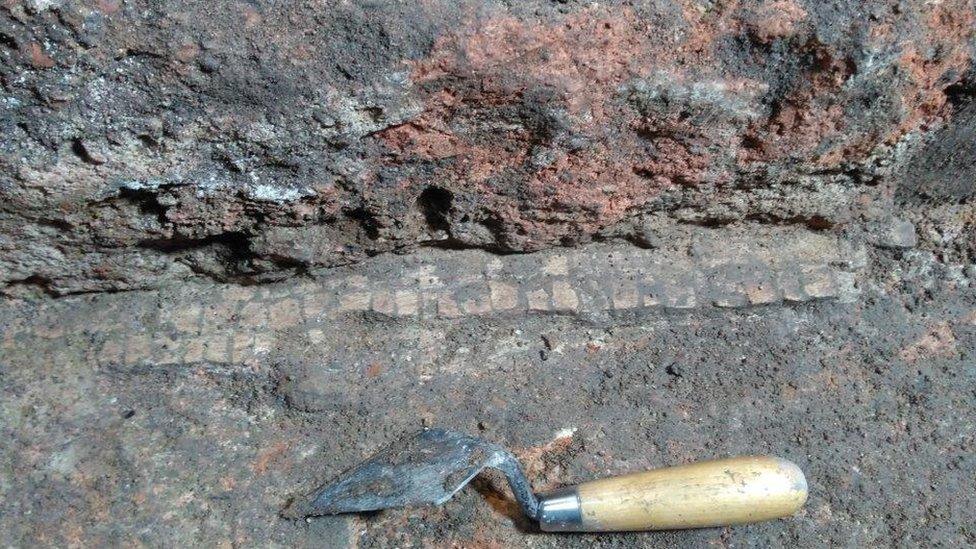Roman mosaic in 'exciting' discovery one of three of its kind, says expert
- Published
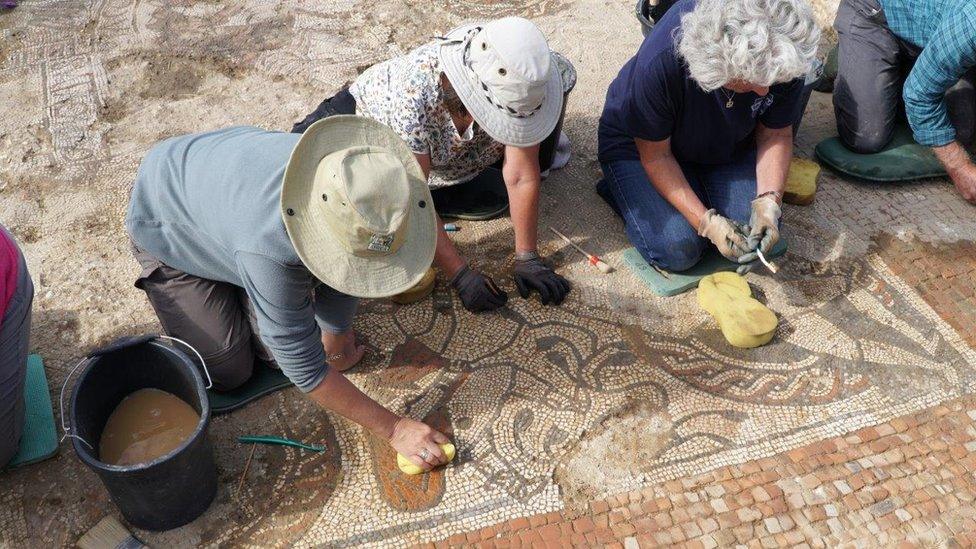
Volunteers washed the mosaic floor for the first time in 1,700 years
A Roman mosaic has been fully uncovered in a West Berkshire village in what has been described as one of Britain's most exciting discoveries.
It is one of just three known mosaics of its kind in the world, according to Anthony Beeson, an expert on Roman and Greek architecture and art.
Archaeologist Matt Nichol described it as "second to none" in terms of imagery and iconography.
The mosaic depicts a mythical chariot race for the hand of a princess.
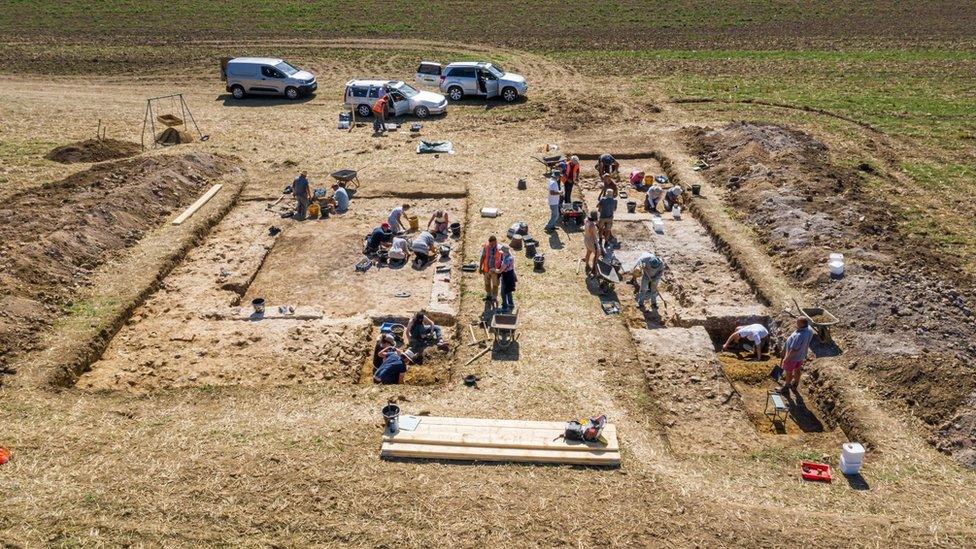
Archaeologists and volunteers spent nine days uncovering the Roman find

Mounds of cleared soil were sifted and will eventually be used to recover the mosaic
The mosaic will be opened to the public on Saturday but will then be carefully reburied because of its location on private arable farming land.
Mr Nichol, who worked on the dig, said: "It's been quite overwhelming, not just for me but everyone involved.
"There's a real buzz and excitement on this project, I've never seen that before on any project that I've worked on."

Workers carefully excavated items found in the mosaic room wall
Joy Appleton, from the Boxford History Project, said "It's absolutely beyond our expectations. We now know it's a unique mosaic but to find it here in little old Boxford is quite something.
She said the area has "lots of iron age and bronze age stuff around" as well as Saxon but no Roman finds until now.
"Now we've found them and that's that link through the history of the village of Boxford," she said, adding: "There's nothing like it at all in Roman Britain."

Workers used toothbrushes to painstakingly clean it without damaging the ancient tiles

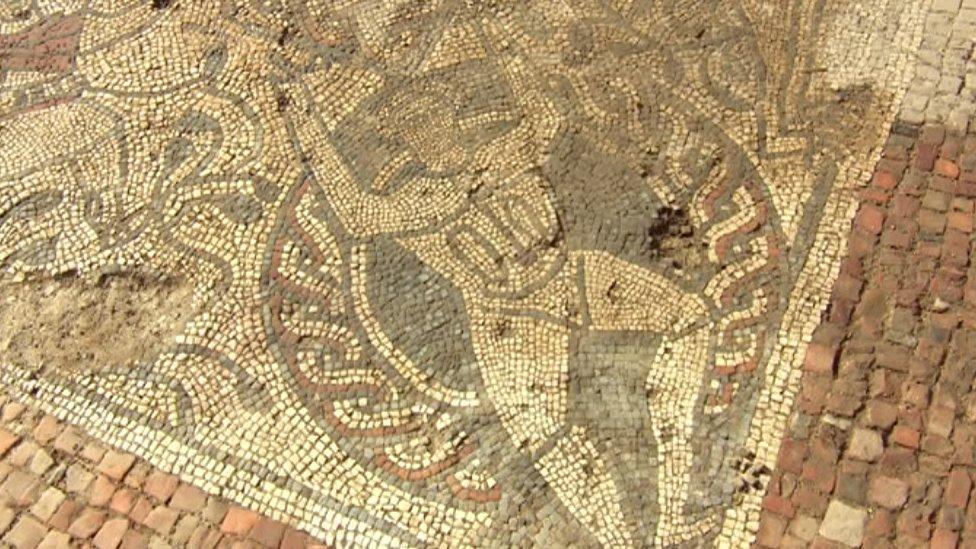
Roman art and architecture expert Anthony Beeson uncovered the story held within the mosaic
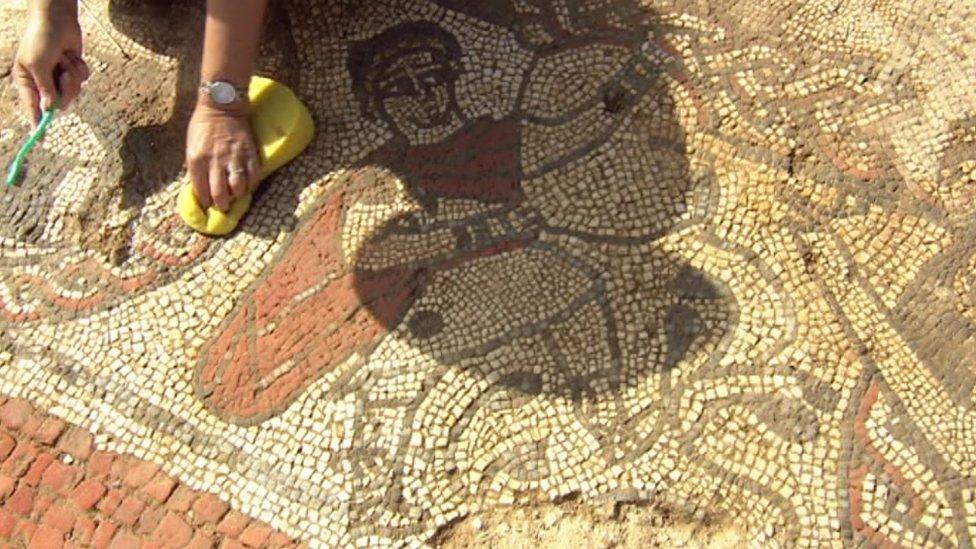
Mr Beeson believes the main mosaic panel depicts the mythical Greek story of Pelops
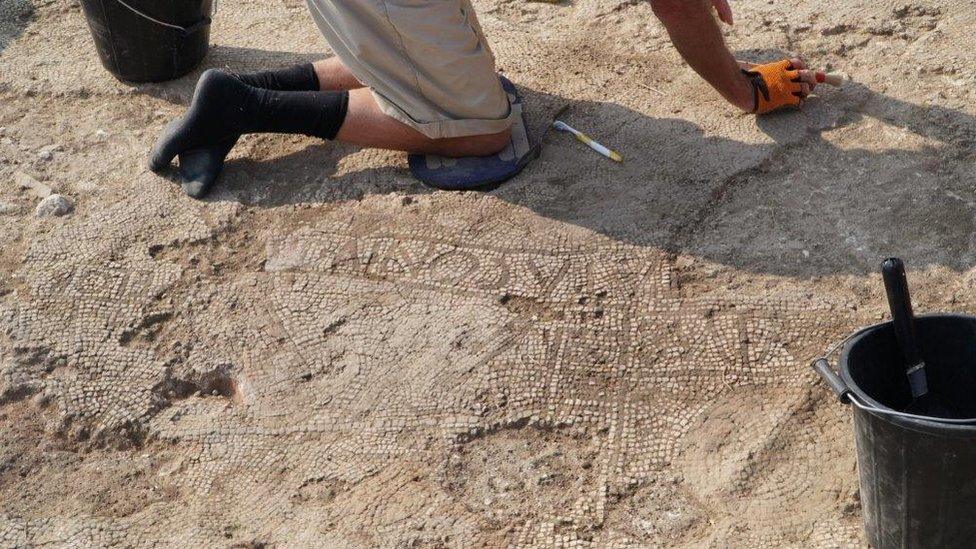
Archaeologist Matt Nichol described it as "second to none"
Explaining the story depicted in the mosaic, Mr Beeson said: "The pavement shows Bellerophon and Pegasus but the main action is the story of Pelops and his race to win the hand of the Princess Hippodamia.
"The king, Oenomaus, having been told that his future son-in-law would bring about his death, made all contestants race him in a chariot but handicapped them by putting the princess in the vehicle with them.
"The losers were decapitated and their heads displayed.
"Pelops persuaded a former lover Myrtilus and the King's chariot master to substitute a wax lynch pin and the king was killed when the wheels flew off.
"Pelops thereby won but killed Myrtilus who cursed his lineage and brought about the curse of the Pelops. The king's funerary games are said to be the origin of the Olympics."

Even the walls had to be gently cleaned

Volunteers believe this is an earring made from copper


Archeologists on the dig believe this brick bears the markings of hobnails in a Roman's boot
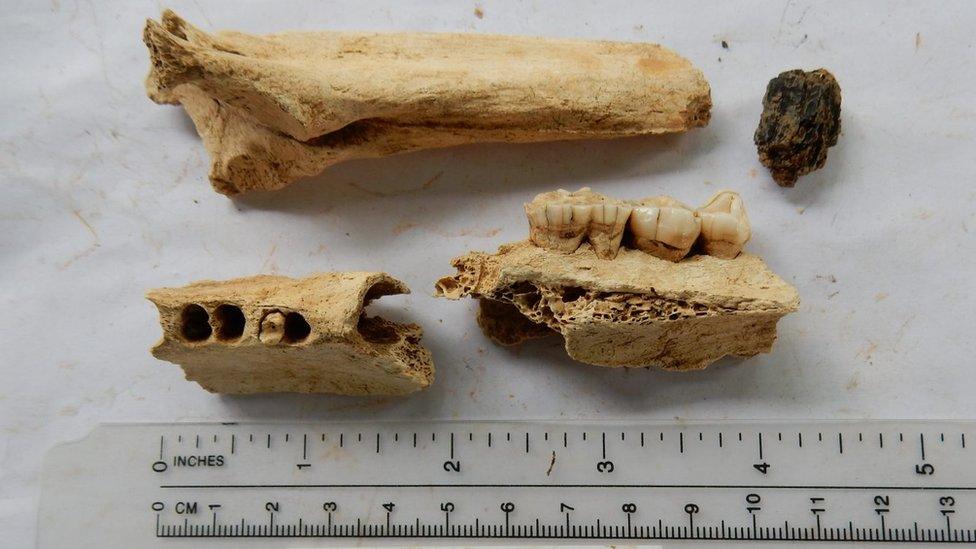
Bones were one of the more grisly finds on the dig

The mosaic will be open to the public on Saturday before it is once again carefully buried
- Published25 September 2018
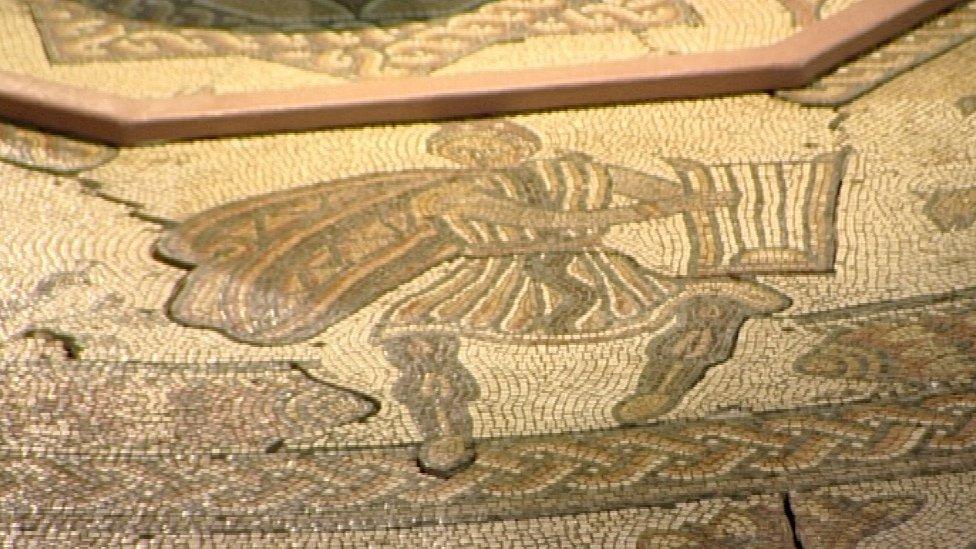
- Published6 May 2017

- Published22 February 2018
